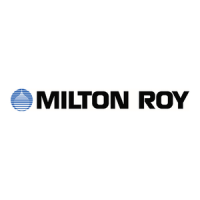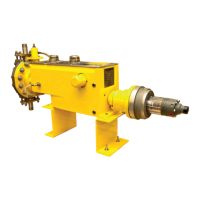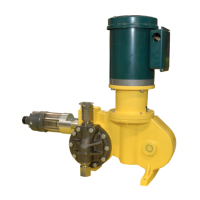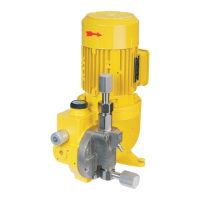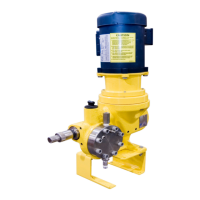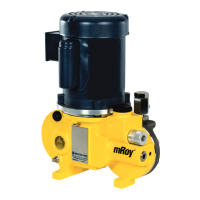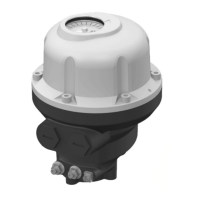ii Instruction Manual
PRECAUTIONS
The following precautions should be taken when working with metering pumps.
Please read this section carefully prior to installation.
Protective Clothing
ALWAYS wear protective clothing, face shield, safety glasses and gloves when working on or
near your metering pump. Additional precautions should be taken depending on the solution
being pumped. Refer to Safety Data Sheets for the solution being pumped.
Hearing Protection
It is recommended that hearing protection be used if the pump is in an environment where the
time- weighted average sound level (TWA) of 85 decibels is exceeded. (as measured on the
A scale - slow response)
Electrical Safety
• Remove power and ensure that it remains off while maintaining pump.
• DO NOT FORGET TO CONNECT THE PUMP TO EARTH/ GROUND.
• Electric protection of the motor (Thermal protection or by means of fuses) is to correspond
to the rated current indicated on the motor data plate.
Liquid Compatibility
Verify if the materials of construction of the wetted components of your pump are
recommended for the solution (chemical) to be pumped.
Pumps Water “Primed”
All pumps are tested with water at the factory. If your process solution is not compatible with
water, ush the Pump Head Assembly with an appropriate solution before introducing the
process solution.
Plumbing and Electrical Connections
Always adhere to your local plumbing and electrical codes.
Line Depressurization
To reduce the risk of chemical contact during disassembly or maintenance, the suction and
discharge lines should be depressurized before servicing.
Over Pressure Protection
To ensure safe operation of the system it is recommended that some type of safety/pressure-
relief valve be installed to protect the piping and other system components from damage due
to over- pressure.
Lifting
This manual should be used as a guide only - Follow your company’s recommended lifting
procedures. It is not intended to replace or take precedence over recommendations, policies
and procedures judged as safe due to the local environment than what is contained herein.
Use lifting equipment that is rated for the weight of the equipment to be lifted.
